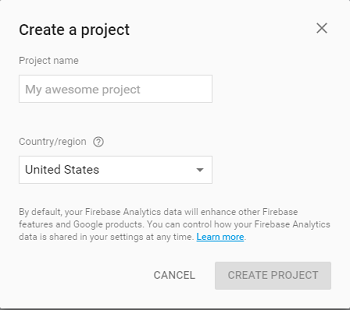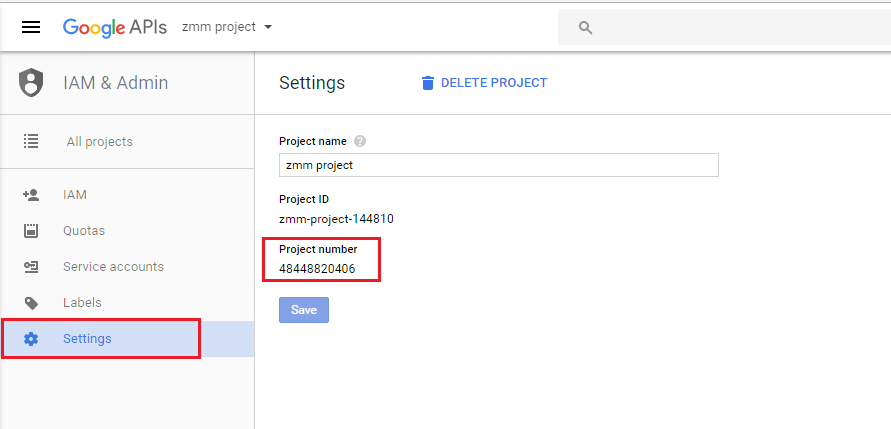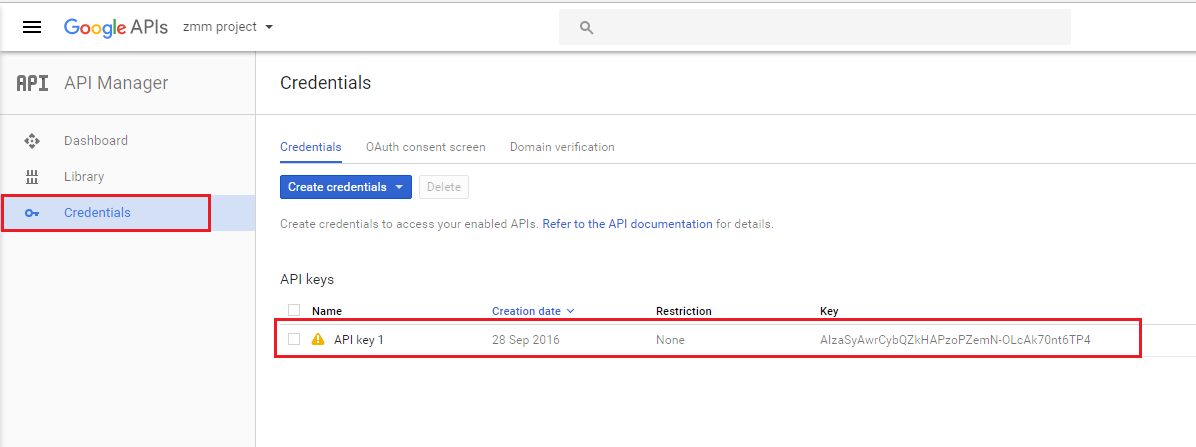6.1 Enabling Push Notifications for Android Devices
Google Cloud Messaging (GCM) enables a ZENworks MDM Server to notify an Android device when the server requires information from the device or has changes for the device. The ZENworks MDM Server communicates with the Google Cloud Messaging service, which then pushes the notification to the device. After receiving the push notification, the device contacts the ZENworks MDM Server directly to provide the requested information or receive the changes.
6.1.1 Prerequisites
-
Firebase Console: For Google Cloud Messaging, you must use the Firebase Console, which is the latest version of GCM. In this console, you need to create a Firebase project and obtain a project API Key (server key) and a Project Number (sender ID) that allows your ZENworks Primary Server to send notifications to Android mobile devices. The Project Number and API Key are then used to configure ZENworks access to the GCM service.
However, if you have already created a GCM project, then the steps to retrieve the API key and Project Number are detailed in the following procedure.
-
MDM Server: An MDM role is assigned to a Primary Server. For more information, see Configuring MDM Servers.
6.1.2 Procedure
-
Create a Firebase Project: Follow these steps if you want to create a Firebase project. However, if you have already created a GCM project, then go to Step 2:
-
On the Getting Started with Mobile Management page, navigate to the Android Devices section, click Configure GCM to display the Google Cloud Messaging page. Alternatively, from the left hand side navigation pane of ZCC, navigate to Configuration > Push Notification > Google Cloud Messaging.
-
Click Google Developers Console, which will direct you to the Firebase console at https://console.firebase.google.com.
-
Sign in using your Google account credentials.
As a best practice, we recommend that this should be a Google account created specifically for managing your corporate Google Cloud Messaging service and not a personal Google account.
-
Click Create New Project.

-
Specify a Project Name and click Create Project.

-
After the project is created, click
 appearing next to your project and click Project Settings.
appearing next to your project and click Project Settings.

-
Select the Cloud Messaging tab. You can now view the Server Key, which is the same as the API key, and the Sender ID, which is the same as the Project Number.

-
Exit the Firebase Console, then continue with Step 3.
-
-
Existing GCM Project: If you have already created a GCM project, then refer to the following steps to retrieve the API Key and Project Number:
-
Navigate to the link https://console.developers.google.com and sign in using your Google account credentials.
-
Select the existing GCM project from the drop-down menu appearing on the top-left corner of the page.

-
To retrieve the project number, click the Hamburger menu appearing on the top-left corner and select IAM & Admin, to view the IAM & Admin page.

-
On the IAM & Admin page, click Settings. You can now view and make a note of the Project Number.

-
To retrieve the API key, click the Hamburger menu and click API Manager to view the API Manager page.

-
On the API Manager page, click Credentials to view the API key.

-
Exit the Google Developers Console, then continue with Step 3.
-
-
In ZCC, on the Getting Started with Mobile Management page, navigate to the Android Devices section, click Configure GCM to display the Google Cloud Messaging page. Alternatively, from the left hand side navigation pane of ZCC, navigate to Configuration > Push Notification > Google Cloud Messaging. Configure ZENworks with the Project Number and API Key:
-
Click the Enable Google Cloud Messaging check box to turn on the option.
-
Fill in the following fields with the information you generated in the Google Developers Console:
-
Project number: Specify the project number generated for your ZENworks project.
-
API key: Specify the API server key generated for your ZENworks project.
-
Key activation date: Specify the key’s activation date.
-
Google user ID: Specify the Google account ID used to log in to the Google Developers Console and create the ZENworks project.
-
-
Click Test API Key to validate that the information is entered correctly and the key is active. This option will test the connection to GCM from each of the MDM Servers configured in the zone. If the connectivity fails from one or more MDM Servers, then the failed servers are listed.
-
Click OK to save your Google Cloud Messaging configuration.
-